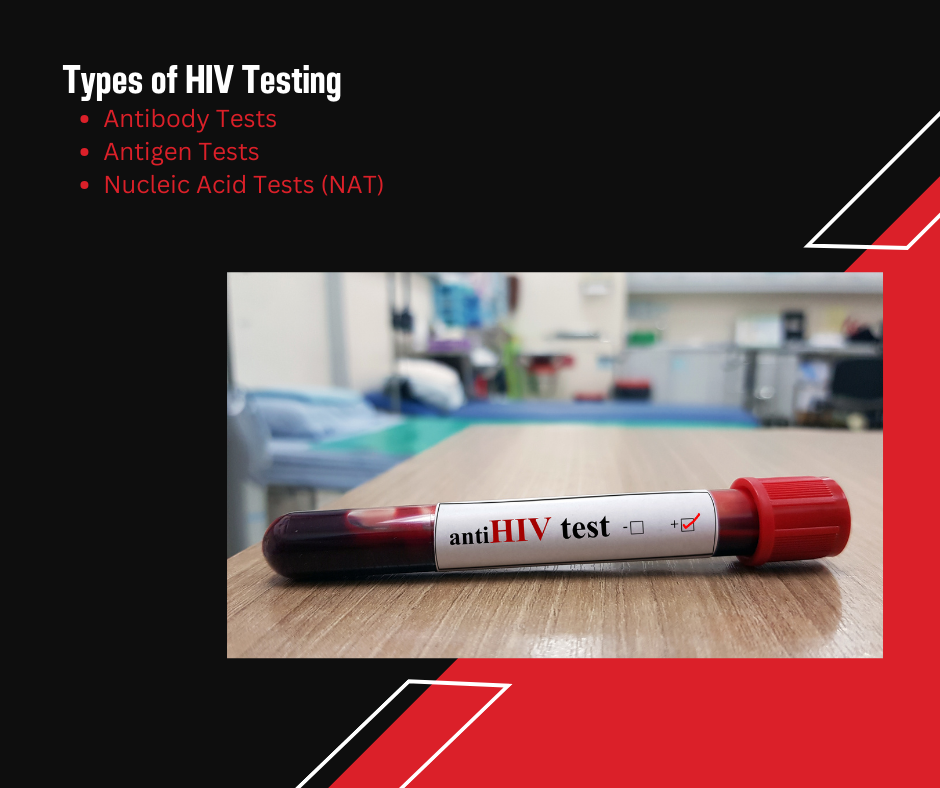Importance of HIV Testing: Types, Procedure, Results and Timing
HIV testing stands as a cornerstone in the fight against the spread of the virus. With advancements in medical science and increased awareness, understanding the importance of HIV testing has become paramount. This article explores the significance of HIV testing, delving into its various types, procedure, interpreting results, and the crucial aspect of timing.
The Crucial Role of HIV Testing
- Early Detection Saves Lives: HIV, if left undiagnosed and untreated, can progress to AIDS, significantly impacting an individual’s health and lifespan. Timely testing allows for early intervention and access to life-saving treatments, thereby improving health outcomes.
- Prevention and Transmission Control: Knowing one’s HIV status empowers individuals to take necessary precautions to prevent transmission to others. This includes adopting safer sex practices and accessing preventive measures such as PrEP (Pre-Exposure Prophylaxis) for high-risk individuals.
- Linkage to Care and Support: A positive HIV diagnosis initiates a pathway to essential medical care, treatment, and support services. Through testing, individuals living with HIV can access resources and interventions tailored to their needs, enhancing their quality of life.

Types of HIV Testing
- Antibody Tests: The most common type of HIV test detects antibodies produced by the immune system in response to the virus. These tests are usually conducted through blood samples collected via finger prick or venipuncture.
- Antigen Tests: These tests detect HIV antigens, proteins produced by the virus immediately after infection. Antigen tests are often used in combination with antibody tests for rapid diagnosis.
- Nucleic Acid Tests (NAT): NAT, including PCR (Polymerase Chain Reaction) tests, directly detect the genetic material of the virus. These tests are highly sensitive and can detect HIV earlier than antibody or antigen tests.
Procedure for HIV Testing
- Pre-Test Counseling: Before undergoing testing, individuals receive counseling to understand the testing process, implications of results, and available support services.
- Sample Collection: Depending on the type of test, samples of blood, oral fluid, or urine are collected by trained healthcare professionals.
- Laboratory Analysis: Samples are analyzed in laboratories using specialized equipment and techniques to detect HIV markers accurately.
- Post-Test Counseling: Following testing, individuals receive post-test counseling to interpret results, discuss next steps, and address any concerns or questions.
Interpreting HIV Test Results
- Negative Result: A negative result indicates that HIV antibodies, antigens, or genetic material were not detected at the time of testing. However, individuals should adhere to regular testing protocols, especially if engaging in high-risk behaviors.
- Positive Result: A positive result indicates the presence of HIV antibodies, antigens, or genetic material. Confirmatory testing is necessary to confirm the diagnosis, after which individuals are linked to care and support services.

Timing Considerations
- Routine Testing: Regular HIV testing is recommended for individuals at higher risk of infection, including those with multiple sexual partners, intravenous drug users, and individuals in communities with high HIV prevalence.
- After Potential Exposure: Individuals should undergo testing after potential exposure to HIV, such as unprotected sex or needle-sharing, with repeat testing as necessary to detect acute infections.
HIV testing is not only a vital tool for individual health but also plays a crucial role in preventing transmission and controlling the spread of HIV within communities. By understanding the different types of tests, testing procedures, interpreting results, and adhering to recommended testing timelines, individuals can take proactive steps towards safeguarding their health and well-being. Remember, knowledge is power, and knowing one’s HIV status is the first step towards effective HIV prevention and management.

